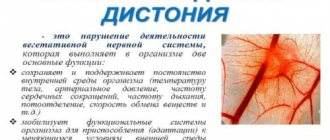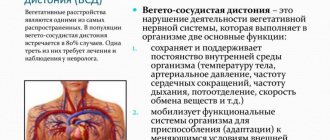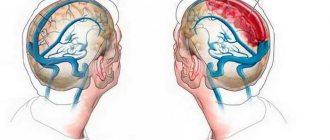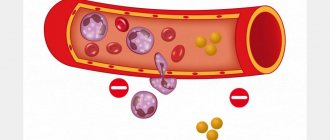What to do and how to treat?
As already noted, dystonia is primarily a pathology of the nervous system. Therefore, a temperature of 37 with VSD is not an indication for the use of antipyretic drugs such as paracetamol or ibuprofen. First, try to get some rest and use physical aids. For example, place a wet towel on your forehead. Usually such a simple technique gives a good answer.
You can also use sedatives, such as validol, tinctures of valerian root or motherwort. Herbal teas made from mint, lemon balm, and chamomile are considered good herbal remedies. Doctors also speak well of psychotherapeutic methods such as auto-training or meditation. All these methods allow you to improve the condition of the nervous system and regulate the thermal regime.
Equally important are preventive measures that affect the provoking factors of low-grade fever. Moderate exercise is recommended, which adapts the body to physical activity. Even simple walks in the fresh air or yoga can significantly improve your condition. This also includes a balanced diet, giving up bad habits, avoiding stress - everything that is called a healthy lifestyle.
Very often, patients who have been ill for a long time with VSD do not attach importance to a constant low-grade fever. Thanks to this, you can miss the onset of other, more dangerous infectious or inflammatory diseases. So don't forget about this possibility. Always carefully monitor your condition and listen to your body's signals.
As already noted, dystonia is primarily a pathology of the nervous system. Therefore, a temperature of 37 with VSD is not an indication for the use of antipyretic drugs such as paracetamol or ibuprofen. First, try to get some rest and use physical aids. For example, place a wet towel on your forehead. Usually such a simple technique gives a good answer.
Among medicines, preference is given to herbal preparations that have a calming effect. They are recommended for use in case of severe health problems, as well as a long course of the pathological process. Preference is given to aqueous or alcoholic solutions of valerian or motherwort.
What does elevated temperature lead to during VSD?
From such changes in the work of the thermoregulation center, not only the thermometer is lost, but the person suffers incredibly. It is this instability in the regulation of body temperature that leads to two more symptoms characteristic of VSD.
The first of them is increased sweating under normal environmental conditions. That is, it’s not hot outside, no one is sweating nearby, and you’re the only one covered in drops of sweat.
Secondly, you freeze even on summer days, not to mention the cold season. No warm clothes or shoes can save you from feeling cold, especially in winter. Hands and feet become numb even in warm gloves and the furthest boots. One of the attendant troubles is that people who shake hands with you feel the icy coldness of your hand.
Another hormonal change in the body, namely menopause, may result in increased body temperature and sweating. But these symptoms during menopause are in no way related to physical activity, and they can “get hot and sweaty” even in a state of complete rest. This cannot possibly happen with VSD and panic disorder.
Remember forever, with VSD, low-grade fever appears at the slightest physical exertion, and goes away after a short rest in a supine position.
Remember forever, with VSD, low-grade fever appears at the slightest physical exertion, and goes away after a short rest in a supine position.
Prevention of thermoregulation failures
To prevent VSD from changing your daily plans by increasing your temperature under any load, you need to train your body and eliminate a number of bad habits:
- Daily walks in the fresh air during VSD accustom the body to light physical activity, so that when walking quickly, the autonomic system does not react with a temperature failure during VSD. Fresh air saturates the circulatory system and normalizes the psychological state during vvd.
- Herbal teas for VSD instead of the usual coffee and black tea will calm the nerves, strengthen the immune system, and give strength. Mint, linden, raspberry, lemon, strawberry are an excellent alternative to industrial drinks for all types of illness, especially for panic attacks, depression, overwork and signs of vitamin deficiency.
- Adequate and timely sleep (at least 8 hours a day and no later than 10 p.m. lights out). Even when the temperature rises during the day, sleep helps to restore strength and normalize the temperature during the night. Neglecting this recommendation can lead to overwork and greater exhaustion, both physical and psychological.
Sometimes the cause of hyperthermia during VSD is a person’s psychosomatic state, when the problem is exacerbated in the head and no amount of VSD prevention will help. Here, a consultation with a psychiatrist is needed to rule out the root cause of the increase in temperature during VSD.
Maria, 37 years old
Chills with VSD
Chills and internal trembling during VSD are caused by the fact that malfunctioning autonomic pathways send incorrect information to the human brain. He, in turn, gives a response command to tremble, increasing heat production. Although, in fact, it is warm around and there is no need to warm the body. As a result, the person develops a fever with a feeling of cold or chills.
When the temperature drops sharply, the patient feels a rush. This happens because the vessels dilate and blood flows to the periphery. This explains hot flashes during VSD. A person with a similar course of the disease complains that he constantly has a feeling of heat and weakness alternating with cold.
Since dystonia is most often not an independent disease, but a consequence of an underlying disease, for example, osteochondrosis, first you need to eliminate the cause of its development.
Why is there an elevated temperature with VSD?
Temperature jumps during VSD occur due to disturbances in the functioning of the peripheral nervous system, which cause vascular dysfunction. This negatively affects the body's ability to thermoregulate. Generally speaking, body temperature is maintained by constricting or dilating blood vessels. With VSD, brain signals may not reach the peripheral parts.
Causes of failures in the body’s thermoregulation due to neurocirculatory dysfunction, or vegetative-vascular dystonia:
- Dysfunction of the thermoregulation center located in the hypothalamus;
- adrenaline release during anxiety, panic attacks, etc. phenomena during VSD;
- a person’s fear at the first manifestations of VSD, anxiety about a possible jump in temperature: oddly enough, after this it can actually rise.
Symptoms of low-grade fever
If you ask a doctor what is the main and defining symptom of vegetative-vascular dystonia, he will not answer. Because the disorder occurs individually for everyone. Let's look at the signs that will make you suspect such a disease.
Chills with VSD
https://www.youtube.com/watch?v=ytabouten-GB
When the temperature drops sharply, the patient feels a rush. This happens because the vessels dilate and blood flows to the periphery. This explains hot flashes during VSD. A person with a similar course of the disease complains that he constantly has a feeling of heat and weakness alternating with cold.
One of the most striking symptoms of the disease is sweating at normal air temperatures and freezing in warm conditions. The cold rushes into the hands and feet, which are impossible to warm with gloves and warm socks.
It is worth noting such a sensation as heat in the sternum during VSD. It must be distinguished from heart attacks and gastric symptoms such as heartburn. This condition is associated with a neurological factor that affects the functioning of the cardiovascular system. The attack may be accompanied by pain, although the heart itself is healthy. The sensations are aggravated if the patient is very frightened. Although this condition in itself is not dangerous.
Other manifestations
Depending on which organ system is affected, several types of disease are distinguished:
- cardialgic: pain in the heart, anxiety, increased heart rate, increased blood pressure, but there is no reaction to drugs for angina pectoris;
- tachycardial: increased heart rate up to 160 beats per minute, increased blood pressure, a feeling of pulsation in the temples, redness of the face;
- hypertensive: surges in blood pressure;
- visceral: abdominal pain, bloating, diarrhea or constipation;
- hypotonic: decrease in pressure to 90 to 60 and below;
- asthenic: fatigue, fever, trembling hands;
- respiratory: pressing pain in the chest, difficulty breathing, lump in the throat, cough, inability to breathe fully;
- mixed type.
An increase in temperature during VSD is not the only differential symptom. A high temperature is characteristic of an attack of dystonia, along with tachycardia, sweating, and coldness in the arms and legs. The temperature can jump to 38 degrees, but it won’t last long. But the thermometer should not show higher than, say, 39 degrees during a vegetative crisis.
Vegetative-vascular dystonia is one of the diagnoses that can be made with a constant slightly elevated body temperature. You can find a complete list of possible causes of low-grade fever in our other article.
More often, with VSD, the temperature is 36.8-36.9-37-37.1-37.2 and higher, up to 38 degrees. In most cases, it stays in the range of 37.1-37.5. But even if the indicator does not exceed 36.8-37 degrees, you need to understand the reasons, because this is also not normal.
VSD and low-grade fever are two companions that go hand in hand. Low-grade fever with VSD lasts for months and years or even a lifetime. But it can also go away suddenly without treatment.
If you don’t have a thermometer at hand, you can suspect a temperature that is considered subfebrile based on the following signs:
- Feeling hot and sweating.
- Fogginess of consciousness, although the person remains able to work.
- Discomfort in the mucous membranes of the eyes with dryness and pain.
- Feeling of mild intoxication.
- Lethargy and weakness.
The set of symptoms depends on the cause of the temperature.
https://www.youtube.com/watch?v=ytcopyrighten-GB
At the same time, a slightly elevated temperature may occur without symptoms at all.
Temperature deviations are within normal limits
Everyone knows that the normal temperature of the human body is 36.6 degrees Celsius. But some people constantly live (and feel great) with slight deviations from this indicator. Each organism has a number of its own individual characteristics. For some people, 36.3 is the normal body temperature. For others, the usual figure is 36.8, -37.0, or even 37.3. Conclusions about the norm are made on the basis of observations of well-being, after examinations confirming the absence of diseases.
Important! It is worth considering that in children under 1 year of age, the normal temperature may fluctuate due to the fact that the thermoregulation system is still being formed.
For most people, the above-mentioned deviations in body temperature cause some kind of discomfort. So, often a person who has a headache, having tried to relieve the pain with a pill to no avail, thinks of taking his temperature just in case. To his surprise, he finds himself at 37.0.
A typical case of increased temperature during VSD is supplemented by heart rhythm disturbances, changes in blood pressure, headaches, and heart pain. You may experience chills, tremors, coldness in the extremities, and increased sweating.
The temperature rises to 37.0 - 37.5, sometimes even up to 38.0 degrees. As a rule, having reached 38.0, it soon begins to slowly subside. If the thermometer creeps higher, reaching 39.0 degrees, you need to be wary. Such a high temperature is not typical for VSD - it may be a sign of another, more dangerous disease.
What is weather dependence?
The individual characteristics of some people's bodies make them weather dependent. Before a thunderstorm or hurricane, at the time of cyclones and other similar natural phenomena, they may experience pain in:
- head;
- heart;
- stomach;
- muscles;
- joints.
Their chronic diseases worsen and their sleep is disturbed. Weather dependence often manifests itself in increased irritability and loss of appetite. Sometimes, in the most severe cases, there may be a complete loss of performance. Almost all patients with a controversial diagnosis of “vegetative-vascular dystonia” are classified as weather-dependent. Let us remember that VSD is not a disease, but a conditional name for a condition that has a lot of symptoms and about 10 syndromes . Of course, one way or another, VSD is connected with the nervous system and psyche, and almost all patients are also distinguished by suspiciousness and increased concern about their health, so the topic “VSD and the weather” becomes the most relevant.
Due to weather sensitivity, you may have trouble sleeping
Low-grade fever with VSD
In descriptions of the symptoms of some diseases and syndromes, including VSD, the term “low-grade fever” is used. The condition of the body in which such a temperature occurs and persists is called subfebrile condition. The causes of this condition may vary.
What does this mean?
Low-grade fever is a body temperature raised to a level from 37.0 to 37.9. Higher rates (38.0 and above) usually occur against the background of pronounced manifestations of a disease. It is by the combination of these signs that the doctor can accurately make a diagnosis.
With low-grade fever, making a diagnosis is difficult because you need to analyze a whole list of too specific symptoms. In different combinations they can lead to completely different diseases.
Subfertile temperature during VSD varies between 36.8-37.5. Although a reading of up to 37 is considered “within the normal range,” in fact, the person’s well-being is no longer very good.
Why does it occur?
An increase in body temperature is a protective reaction of the body that fights germs, viruses, and inflammation. Frequent, prolonged increases in temperature may indicate indolent diseases, including AIDS, cancer or systemic lupus erythematosus. However, in the case of VSD, the mechanism for combating pathologies is not involved. With dystonia, temperature deviations occur due to impaired thermoregulation.
In adolescents, VSD is most often diagnosed. Low-grade fever is one of its manifestations during puberty, when hormonal changes occur. At any age, thermoneurosis can appear with frequent infectious and colds that weaken the body. It may also be related to the healing process.
How does this manifest itself?
Indeed, VSD often occurs with periodic increases in temperature, which either decrease on their own or require specialist intervention. The causes of hyperthermia are explained in different ways.
Often the body temperature rises to low-grade levels after vigorous physical activity. Sometimes, with increased activity of the corpus luteum, the temperature may rise in the first three months of pregnancy. A significant increase in temperature can be observed during a hysterical attack, after the cessation of which the body temperature returns to normal on its own. Good conditions for an increase in temperature are endocrine and immunological disorders, as well as what does not sound very common - a conditioned reflex connection, or more simply: a conditioned reflex, when the very measurement of temperature causes a response.
What to do if the temperature stays between 37-37.5 degrees?
If an adult’s body temperature rises daily and remains above 37 for a long time, it is necessary to visit a general practitioner (for children, a pediatrician). The doctor will write you a referral for laboratory tests. Most likely, the list of tests that will need to be taken will look like this:
- General blood test;
- general urine test;
- blood test for biochemistry;
- blood sugar test;
- blood test for thyroid hormones;
- fluorography of the lungs.
Having summed up the results of the examination, the doctor will determine the presence (or absence) of any diseases. For example, if a person has cancer, this can be seen even from a general blood test - the doctor will direct him to donate blood for tumor markers. The picture is similar with other serious diseases.
If there are no dangerous diseases, the option of VSD remains. Analyzes with it can be quite good.
What thermometer reading can be a sign of VSD?
Since vegetative-vascular dystonia and temperature can have a cause-and-effect relationship, it is important to understand in what cases and what temperature should be with VSD. In other words, it is necessary to know clear parameters of fever, which are signs of the possible presence of VSD
If there is a sharp rise in temperature, antihistamines and antidepressants are allowed to be taken
In medicine, there is a term - low-grade fever, that is, one that exceeds 37° by several tenths over a long period of time. A subfebrile temperature may be observed with VSD. Since it is quite low, they do not pay attention to it, considering it harmless, and often they do not even notice it. However, fever in the body - especially for a long time - is in itself a reason to consult a doctor. There are clear medical parameters indicating what temperature may be a sign of vegetative-vascular dystonia - this is the range of 37.2°-37.5°.
If you often feel hot, or feel heat in your body or face for a long period of time, without observing any signs of a cold, but feeling tired and decreased performance, then this is a reason to control your body’s thermoregulation. However, if the thermometer shows 38° and above, you can be sure that the cause of this condition is not vascular dystonia at all.
Despite the fact that low-grade fever does not pose a danger to the body, it should be constantly monitored and surges should not be allowed.
Prevention of thermoregulation failures in VSD
It is possible and necessary to combat thermoneurosis with VSD; it is best to do this with the help of preventive measures.
First of all, you need to eliminate the causes of worry and stress, and develop the habit of treating everything calmly.
Secondly, it is necessary to harden the body and strengthen the immune system. For this purpose, walks in the fresh air are very useful, especially in the evening before bed, contemplation of nature, moderate physical activity, and enough sleep. You definitely need to balance your diet.
Massage and physiotherapeutic procedures will also have a healing effect on the body. By the way, thanks to such prevention, you may be able to mitigate all the other characteristic symptoms of neurocircular dystonia.
Symptoms of VSD
If you ask a doctor what is the main and defining symptom of vegetative-vascular dystonia, he will not answer. Because the disorder occurs individually for everyone. Let's look at the signs that will make you suspect such a disease.
Chills with VSD
Chills and internal trembling during VSD are caused by the fact that malfunctioning autonomic pathways send incorrect information to the human brain. He, in turn, gives a response command to tremble, increasing heat production. Although, in fact, it is warm around and there is no need to warm the body. As a result, the person develops a fever with a feeling of cold or chills.
When the temperature drops sharply, the patient feels a rush. This happens because the vessels dilate and blood flows to the periphery. This explains hot flashes during VSD. A person with a similar course of the disease complains that he constantly has a feeling of heat and weakness alternating with cold.
One of the most striking symptoms of the disease is sweating at normal air temperatures and freezing in warm conditions. The cold rushes into the hands and feet, which are impossible to warm with gloves and warm socks.
It is worth noting such a sensation as heat in the sternum during VSD. It must be distinguished from heart attacks and gastric symptoms such as heartburn. This condition is associated with a neurological factor that affects the functioning of the cardiovascular system. The attack may be accompanied by pain, although the heart itself is healthy. The sensations are aggravated if the patient is very frightened. Although this condition in itself is not dangerous.
Panic attacks
Another manifestation of vegetative-vascular dystonia is a panic attack. It is accompanied by a feeling of lack of air, increased heart rate, increased blood pressure and sometimes temperature. In this state, the patient develops a fear of death and even loses consciousness if he stresses himself out enough. Let us reassure you: the feeling of lack of air during a panic attack does not lead to death.
Other manifestations
Depending on which organ system is affected, several types of disease are distinguished:
- cardialgic: pain in the heart, anxiety, increased heart rate, increased blood pressure, but there is no reaction to drugs for angina pectoris;
- tachycardial: increased heart rate up to 160 beats per minute, increased blood pressure, a feeling of pulsation in the temples, redness of the face;
- hypertensive: surges in blood pressure;
- visceral: abdominal pain, bloating, diarrhea or constipation;
- hypotonic: decrease in pressure to 90 to 60 and below;
- asthenic: fatigue, fever, trembling hands;
- respiratory: pressing pain in the chest, difficulty breathing, lump in the throat, cough, inability to breathe fully;
- mixed type.
Elevated temperature with VSD
An increase in temperature during VSD is not the only differential symptom. A high temperature is characteristic of an attack of dystonia, along with tachycardia, sweating, and coldness in the arms and legs. The temperature can jump to 38 degrees, but it won’t last long. But the thermometer should not show higher than, say, 39 degrees during a vegetative crisis.
Low-grade fever with VSD
Vegetative-vascular dystonia is one of the diagnoses that can be made with a constant slightly elevated body temperature. You can find a complete list of possible causes of low-grade fever in our other article.
More often, with VSD, the temperature is 36.8-36.9-37-37.1-37.2 and higher, up to 38 degrees. In most cases, it stays in the range of 37.1-37.5. But even if the indicator does not exceed 36.8-37 degrees, you need to understand the reasons, because this is also not normal.
VSD and low-grade fever are two companions that go hand in hand. Low-grade fever with VSD lasts for months and years or even a lifetime. But it can also go away suddenly without treatment.
Reduced temperature with VSD
With dystonia, the opposite phenomenon is observed—lowered body temperature, that is, a decrease in temperature to levels below 36.6 degrees. The reasons are the same: disorder of the body's thermoregulation. As with hyperthermia (overheating), with hypothermia (cooling the body), the temperature often returns to normal at rest, for example, during sleep.
Treatment
Fluctuations in body temperature during VSD do not require special treatment unless they are a sign of more serious diseases. However, if it increases every evening, it worsens the already less than ideal quality of life of a person prone to dystonia. Does it need to be shot down?
Modern medicine does not recommend taking antipyretics until the temperature reaches 38 degrees. Low-grade fever with VSD is always below this indicator, because it is a manifestation of pathology of the nervous system, the patient should:
- Do not be nervous;
- drink a sedative;
- lie down to rest;
- think about something good.
Most likely, after some time it will completely normalize.
Remember: you should never panic, especially with VSD. After all, this can result in panic attacks or fainting.
Features of patients diagnosed with “vegetative-vascular dystonia”
Most patients are constantly waiting for something to happen to them. Of course, they don't think about it explicitly. This expectation goes into some kind of background mode. But it is enough to experience any discomfort or a feeling of mild pain, and they immediately correlate it with a crisis. In this regard, meteosensitivity during VSD has its own somatic and mental components. The latter acquires the so-called somatoform character. Let us recall that vegetative-vascular dystonia is diagnosed only by doctors in countries formed as a result of the collapse of the USSR. In the West they don’t talk about this disease. All symptoms in ICD 10 are classified as somatoform autonomic dysfunction, and this is a completely different “story”.
Worth seeing: VSD with cephalgic syndrome
So, a healthy person will notice that there is a little noise in the ears, the respiratory system behaved somehow strangely, a headache, and then he is drawn to sleep, but he will not draw any far-reaching conclusions. After 10 minutes a thunderstorm began and it became much easier. That's all. Patients do not even ask themselves whether the weather affects vegetative-vascular dystonia, but immediately begin to search for drugs that will help them survive this crisis caused by nature.
People suffering from VSD are particularly sensitive to weather conditions
Diagnosis of body pathologies
When the temperature first rises to subfebrile levels, it is necessary to exclude a number of diseases with similar manifestations. To do this, you will need to undergo a complete examination of the body:
- general blood and urine tests;
- blood chemistry;
- determination of sugar level;
- check the hormonal system;
- exclude HIV and RW;
- pass oncology markers;
- examine the respiratory system.
Only after excluding somatic pathology will the doctor prescribe treatment for vegetative-vascular dystonia.










